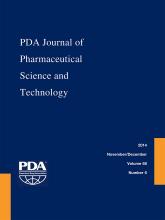Abstract
Next-generation sequencing has been evaluated at Genzyme as a means of identifying bioreactor contaminants due to its capability for detection of known and novel microbial species. In this approach, data obtained from next-generation sequencing is used to interrogate databases containing genomic sequences and identities of potential adventitious agents. We describe here the use of this approach to help identify the causative agent of a bioreactor contamination. We also present the results of spiking experiments to establish the limits of detection for DNA viruses, RNA viruses, and bacteria, in a background of Chinese hamster ovary cells, a cell line used for production of many human therapeutics. Using Illumina sequencing-based detection, all of the viruses included in this study were detected at less than 1 copy per cell, and bacteria were detected at 0.001 copy per cell. Thus, next-generation sequencing–based detection of adventitious agents is a valuable approach that can fill a critical unmet need in the detection of known and novel microorganisms in biopharmaceutical manufacturing.
LAY ABSTRACT: Because biological products are manufactured in cells, the living environment must be kept sterile. Any introduction of microorganisms into the culture vessel may affect the growth and other biological properties of the cells or contaminate the product. It is therefore important to monitor the culture for such contaminants, but many methods can only detect a specific microorganism. In this study, we show that next-generation sequencing–based detection is a sensitive and complementary approach that can potentially detect a wide range of organisms.
Footnotes
CONFERENCE PROCEEDING: Proceedings of the PDA/FDA Advanced Technologies for Virus Detection in the Evaluation of Biologicals Conference: Applications and Challenges Workshop in Bethesda, MD, USA; November 13-14, 2013
Guest Editors: Arifa S. Khan (Rockville, MD), Dominick Vacante (Malvern, PA)
- © PDA, Inc. 2014
PDA members receive access to all articles published in the current year and previous volume year. Institutional subscribers received access to all content. Log in below to receive access to this article if you are either of these.
If you are neither or you are a PDA member trying to access an article outside of your membership license, then you must purchase access to this article (below). If you do not have a username or password for JPST, you will be required to create an account prior to purchasing.
Full issue PDFs are for PDA members only.
Note to pda.org users
The PDA and PDA bookstore websites (www.pda.org and www.pda.org/bookstore) are separate websites from the PDA JPST website. When you first join PDA, your initial UserID and Password are sent to HighWirePress to create your PDA JPST account. Subsequent UserrID and Password changes required at the PDA websites will not pass on to PDA JPST and vice versa. If you forget your PDA JPST UserID and/or Password, you can request help to retrieve UserID and reset Password below.






